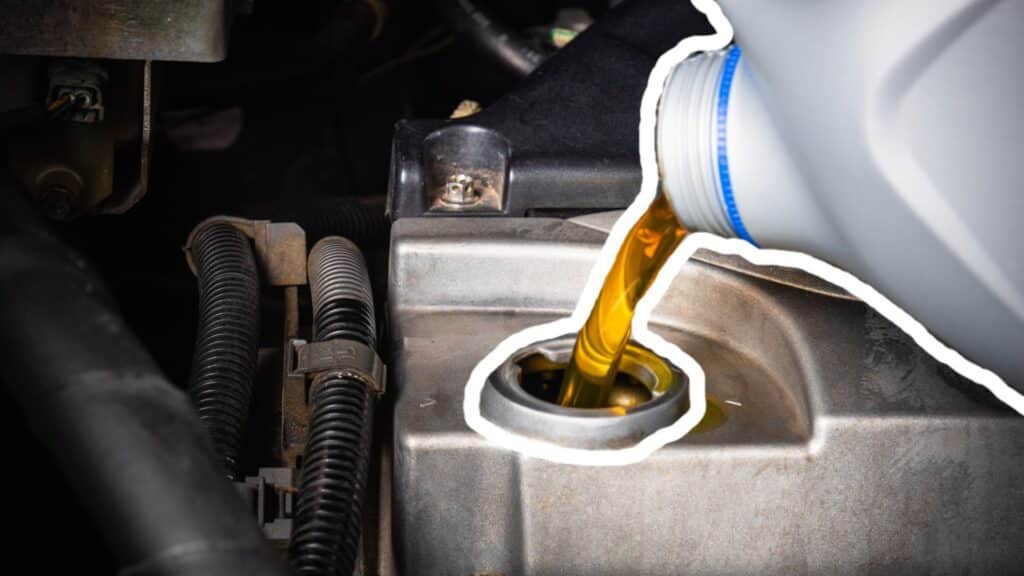Changing your car’s oil is key to keeping it running well. Many drivers wonder how often to change oil, and there’s a lot of conflicting advice.
You may have heard that you must change your oil every 3,000 miles or every three months.
This outdated rule can lead to unnecessary oil changes and wasted money. Modern engines and oils have come a long way.
Most cars can go much longer between oil changes without any issues. In this article, we’ll explore the facts about oil change frequency.
We’ll look at what impacts how often you should change your oil and provide clear guidance to help you make the best choices for your vehicle’s health and your wallet.
How Often to Change Oil?

Learn about modern oil change intervals for today’s cars, why the 3,000-mile rule is outdated, and how to determine the best schedule for your vehicle’s engine health.
The Old 3,000-Mile Rule
For many years, drivers followed a simple rule: change their oil every 3,000 miles. This guideline was widely accepted and easy to remember, but it came from a time when engines were less advanced and oil quality wasn’t as good as today.
Today’s Oil Change Needs
Times have changed, and so have cars and oils. Modern engines are built with tighter tolerances and better materials. Today’s oils are also much better at protecting engines and lasting longer.
Most new cars can go 5,000 to 7,500 miles between oil changes. Some can even go 10,000 miles or more. This is thanks to:
- Better engine design
- Improved oil formulas
- More accurate oil life monitoring systems in cars
It’s important to check your car’s manual for the right oil change schedule. Each vehicle is different, and following the maker’s advice is the best way to keep your engine healthy.
Myth 1: Change Oil Every 3,000 Miles
The 3,000-mile oil change rule began when engines were less advanced, and oil quality was lower.
This advice made sense for older cars but is outdated for most modern vehicles. Today’s engines are built to higher standards, and oils have improved greatly.
Many cars can now go 7,500, 10,000, or even 15,000 miles between oil changes. This extended interval is due to better engine designs and high-quality synthetic oils that protect engines longer.
However, checking your car’s manual for the right schedule is crucial. Each vehicle has specific needs, and following the manufacturer’s recommendations ensures the best care for your engine.
Myth 2: Additives Extend Oil Life Indefinitely
Oil additives are special ingredients that help engine oil work better. They fight wear, keep engines clean, and slow oil breakdown.
While useful, additives can’t make oil last forever. They improve oil performance but don’t eliminate the need for oil changes.
Even with additives, oil still gets dirty and worn out over time. The best plan is to follow your car maker’s advice.
They know how often your car needs new oil. Don’t rely on additives to avoid oil changes.
Regular changes are still key to keeping your engine healthy. Stick to your car’s oil change schedule for the best engine care.
Myth 3: Mixing Oil Types is Harmless
Different oils have unique properties. Mixing them can reduce protection and increase engine wear.
Use the oil type your car maker recommends. This ensures your engine gets the right protection. Check your car’s manual to find out which oil to use.
If you’re unsure, ask a trusted mechanic. Using the correct oil helps your vehicle run smoothly and last longer.
Myth 4: Topping Off Oil is Sufficient
Topping off doesn’t remove old, dirty oil. Full changes replace all oil and remove contaminants, keeping your engine running better and longer.
Complete oil changes remove dirty, used-up oil and eliminate tiny bits of metal and other debris.
Just adding oil doesn’t clean out the old, dirty oil. Over time, this can make your engine work harder and cause parts to wear out faster. Follow your car’s oil change guide for the best care.
Myth 5: Dark Oil Indicates Immediate Change Needed
Oil darkens naturally as it does its job. New oil can turn dark quickly in some engines, but dark color alone doesn’t mean it’s bad.
However, worry if the oil looks thick and sticky or has tiny metal bits. Very dark oil that smells burnt needs changing.
The best way to know when to change your oil is to check your car’s manual. It gives the right schedule for your vehicle. Also, pay attention to how your car runs. Look at the oil’s level and texture, not just color.
Myth 6: Synthetic Oil is Always Better
Synthetic oil lasts longer and works better in extreme temperatures. But it’s not always best for every car.
The right oil depends on your specific engine. Some cars run fine with regular oil; older cars might not need synthetic oil.
Some high-performance engines require it. Check your car’s manual and use the type of oil it recommends.
This ensures your engine gets the right protection. Remember, the best oil is the one that fits your car’s needs. Using what the maker suggests keeps your engine healthy and can save money.
Myth 7: Oil Filter Only Needs Occasional Change
The oil filter catches dirt and metal bits, keeping your engine clean. A clean filter helps your oil work better.
Some think they can skip changing the filter sometimes. This isn’t a good idea. A dirty filter can’t clean oil well and can let harmful stuff through.
This can damage your engine over time. Change the oil filter with every oil change. Use a good quality filter that fits your car.
This keeps your oil clean and your engine protected. Regular filter changes help your engine stay clean and run smoothly longer.
Myth 8: Thicker Oil Provides Better Protection
Some drivers think thicker oil is always better, so they coat engine parts more. This idea is often wrong and can cause problems.
Using the right thickness of oil is key. Your car’s maker knows what works best. Oil that’s too thick can have issues.
It might not flow well when cold, can make the engine work harder, and may reduce fuel economy.
Check your car’s manual for the right oil type. Use the thickness the maker suggests. This ensures your engine gets the right protection. The best oil fits your car’s needs, not just the thickest.
Myth 9: You Cannot Switch Between Synthetic and Conventional Oils
Many worry about switching between synthetic and regular oils, fearing engine harm. This concern is mostly unfounded.
It’s generally safe to switch if both oils meet your car’s specs. Some oils are blends, and synthetic and regular oils are already mixed.
The key is using the right grade and type for your car. Always check your owner’s manual first. It tells you what oil your car needs.
If unsure, ask a trusted mechanic. Switching oils won’t hurt your engine if you use the right kind. Just make sure it’s what your car maker recommends.
Myth 10: Oil Additives Boost Performance Significantly
Many think adding extra stuff to oil makes cars run better. They believe more additives mean better performance.
This isn’t always true. Today’s oils are already well-made with the right mix of additives, and adding more can upset this balance.
It might not help and could cause problems. Oil makers spend time getting the mix right for different engines.
Extra additives might change how the oil works, potentially harming your engine. Use oil as it comes.
Follow your car maker’s advice. They know what’s best for your engine. If your car needs something extra, talk to a mechanic first.
Conclusion
Knowing how often to change oil is key to keeping your car running well. We’ve busted common myths about oil changes, showing that old rules don’t always apply to modern vehicles.
The best advice? Follow your car’s manual. It tells you when to change oil based on your specific model.
Don’t fall for myths about 3,000-mile changes, miracle additives, or always needing synthetic oil.
Regular oil changes are important, but you don’t need to overdo it. Pay attention to your car’s needs, use the right type of oil, and change the filter with each oil change.
Doing this will keep your engine healthy and save money in the long run. Remember, good car care starts with understanding your vehicle’s unique needs.
Frequently Asked Questions
Does Changing Oil More Frequently Help?
Changing oil more often than recommended doesn’t provide extra benefits. It wastes money and resources.
Follow your car’s manual for the best oil change schedule to keep your engine healthy and save money.
How Often Should You Change Your Oil if You Don’t Drive Much?
Even if you drive little, change your oil at least once a year. Oil can degrade over time, not just with mileage. Check your car’s manual for specific recommendations for low-mileage drivers.
Is 7500 Miles Too Much Between Oil Changes?
For many modern cars, 7500 miles between oil changes is fine. The exact number depends on the car model and the type of oil used.
Always check your owner’s manual for the correct interval for your specific vehicle.
Is It Okay to Change Oil Every 10,000 Miles?
Some newer cars with synthetic oil can go 10,000 miles between changes. However, this isn’t true for all vehicles.
Check your car’s manual to see if this extended interval is recommended for your specific model.


